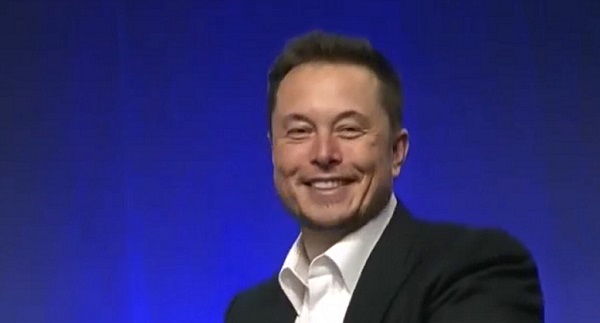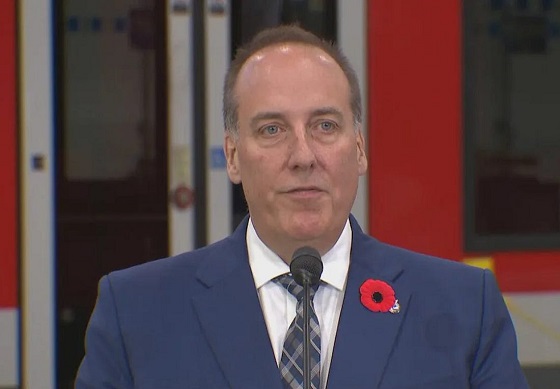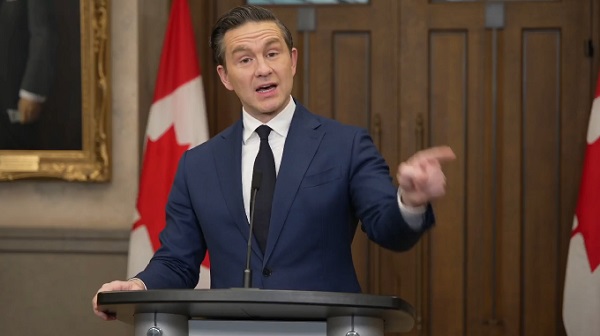Automotive
Canada should get out of EVs before bubble bursts

From the Fraser Institute
A recent article in the The Daily Mail asks, “Is the global EV bubble bursting?” The article then answers the question by looking at electric vehicle (EV) sales figures for six major manufacturers. Sales are down across the industry—Tesla, down 20 per cent in the first quarter this year compared to the same time last year; China’s EV manufacturer, BYD, down 43 per cent; GM down 20.5 per cent; and Volkswagen down 3.3 per cent. Honda saw an anemic uptick of 0.2 per cent. Only BMW experienced a substantial increase in EV sales, up 41 per cent. Not surprisingly, share prices have also dropped across the industry.
An Associated Press article shines more light on EV sales, which in the United States grew only 3.3 per cent in the first quarter of this year, a tiny fraction of the 47 per cent growth that fuelled record sales. The EV share of total U.S. sales fell to 7.15 per cent in the first quarter, down from 7.6 per cent last year. The slowdown, led by Tesla, “confirms automakers’ fears that they moved too quickly to pursue EV buyers.”
In other EV news, Ford has announced it will cut back on EV battery orders, signalling that the company anticipates less EV sales in the future. That would seem to be a good thing for Ford shareholders, as the company also admitted it’s lost $100,000 on every EV it sold in the first quarter of 2024. Ford expects to lose some $5.5 billion from EV sales this year.
So what does it all mean?
Countries that adopted EV sales mandates earlier than Canada are already finding their EV sales targets moving out of reach. In the United Kingdom, which has a 2024 EV sales target of 22 per cent, according to the Society of Motor Manufacturers and Traders, the share of the new car market held by pure battery EVs will be only 19.8 per cent by the end of 2024. The U.K.’s EV sales targets, like Canada’s, require 100 per cent of new vehicle sales to be electric by 2035.
And the rest of Europe is also falling short of EV transition mandates. Forbes reports that current sales of EVs in Europe have flattened at just over 2 million a year, essentially because the continent has run out of early adopters and corporate purchases. Forbes also observes that “other leading market forecasters still expect sales to explode and reach close to 9 million in Europe by 2030,” but that this rate of growth won’t be enough to let the EU and Britain reach target goals of EVs achieving close to an 80 per cent market share.
Meanwhile, the Trudeau government clings to its mandated EV transition, gambling with taxpayer money hand over fist as it pours more than $44 billion into various EV and battery manufacturing operations. And as Andrew Coyne observes in the Globe and Mail, it’s worse than that, as “all of that money will be borrowed, interest costs should also be included. The PBO estimates these at $6.6-billion. All told, that’s $50-billion of other people’s money. For three factories.”
Ottawa’s EV transition policy is deeply misguided, and already shows signs of incipient failure. And likely more failed taxpayer “investments” lie ahead. A smart government would tap the brakes on its EV transition policy. The bubble is growing.
Author:
Automotive
The high price of green virtue

By Jerome Gessaroli for Inside Policy
Reducing transportation emissions is a worthy goal, but policy must be guided by evidence, not ideology.
In the next few years, the average new vehicle in British Columbia could reach $80,000, not because of inflation, but largely because of provincial and federal climate policy. By forcing zero-emission-vehicle (ZEV) targets faster than the market can afford, both governments risk turning climate ambition into an affordability crisis.
EVs are part of the solution, but mandates that outpace market acceptance risk creating real-world challenges, ranging from cold-weather travel to sparse rural charging to the cost and inconvenience for drivers without home charging. As Victoria and Ottawa review their ZEV policies, the goal is to match ambition with evidence.
Introduced in 2019, BC’s mandate was meant to accelerate electrification and cut emissions from light-duty vehicles. In 2023, however, it became far more stringent, setting the most aggressive ZEV targets in North America. What began as a plan to boost ZEV adoption has now become policy orthodoxy. By 2030, automakers must ensure that 90 per cent of new light-duty vehicles sold in BC are zero-emission, regardless of what consumers want or can afford. The evidence suggests this approach is out of step with market realities.
The province isn’t alone in pursuing EV mandates, but its pace is unmatched. British Columbia, Quebec, and the federal government are the only ones in Canada with such rules. BC’s targets rise much faster than California’s, the jurisdiction that usually sets the bar on green-vehicle policy, though all have the same goal of making every new vehicle zero-emission by 2035.
According to Canadian Black Book, 2025 model EVs are about $17,800 more expensive than gas-powered vehicles. However, ever since Ottawa and BC removed EV purchase incentives, sales have fallen and have not yet recovered. Actual demand in BC sits near 16 per cent of new vehicle sales, well below the 26 per cent mandate for 2026. To close that gap, automakers may have to pay steep penalties or cut back on gas-vehicle sales to meet government goals.
The mandate also allows domestic automakers to meet their targets by purchasing credits from companies, such as Tesla, which hold surplus credits, transferring millions of dollars out of the country simply to comply with provincial rules. But even that workaround is not sustainable. As both federal and provincial mandates tighten, credit supplies will shrink and costs will rise, leaving automakers more likely to limit gas-vehicle sales.
It may be climate policy in intent, but in reality, it acts like a luxury tax on mobility. Higher new-vehicle prices are pushing consumers toward used cars, inflating second-hand prices, and keeping older, higher-emitting vehicles on the road longer. Lower-income and rural households are hit hardest, a perverse outcome for a policy meant to reduce emissions.
Infrastructure is another obstacle. Charging-station expansion and grid upgrades remain far behind what is needed to support mass electrification. Estimates suggest powering BC’s future EV fleet alone could require the electricity output of almost two additional Site C dams by 2040. In rural and northern regions, where distances are long and winters are harsh, drivers are understandably reluctant to switch. Beyond infrastructure, changing market and policy conditions now pose additional risks to Canada’s EV goals.
Major automakers have delayed or cancelled new EV models and battery-plant investments. The United States has scaled back or reversed federal and state EV targets and reoriented subsidies toward domestic manufacturing. These shifts are likely to slow EV model availability and investment across North America, pushing both British Columbia and Ottawa to reconsider how realistic their own targets are in more challenging market conditions.
Meanwhile, many Canadians are feeling the strain of record living costs. Recent polling by Abacus Data and Ipsos shows that most Canadians view rising living costs as the country’s most pressing challenge, with many saying the situation is worsening. In that climate, pressing ahead with aggressive mandates despite affordability concerns appears driven more by green ideology than by evidence. Consumers are not rejecting EVs. They are rejecting unrealistic timelines and unaffordable expectations.
Reducing transportation emissions is a worthy goal, but policy must be guided by evidence, not ideology. When targets become detached from real-world conditions, ideology replaces judgment. Pushing too hard risks backlash that can undo the very progress we are trying to achieve.
Neither British Columbia nor the federal government needs to abandon its clean-transportation objectives, but both need to adjust them. That means setting targets that match realistic adoption rates, as EVs become more affordable and capable, and allowing more flexible compliance based on emissions reductions rather than vehicle type. In simple terms, the goal should be cutting emissions, not forcing people to buy a specific type of car. These steps would align ambition with reality and ensure that environmental progress strengthens, rather than undermines, public trust.
With both Ottawa and Victoria reviewing their EV mandates, their next moves will show whether Canadian climate policy is driven by evidence or by ideology. Adjusting targets to reflect real-world affordability and adoption rates would signal pragmatism and strengthen public trust in the country’s clean-energy transition.
Jerome Gessaroli is a senior fellow at the Macdonald-Laurier Institute and leads the Sound Economic Policy Project at the BC Institute of British Columbia
Automotive
Elon Musk Poised To Become World’s First Trillionaire After Shareholder Vote


From the Daily Caller News Foundation
At Tesla’s Austin headquarters, investors backed Musk’s 12-step plan that ties his potential trillion-dollar payout to a series of aggressive financial and operational milestones, including raising the company’s valuation from roughly $1.4 trillion to $8.5 trillion and selling one million humanoid robots within a decade. Musk hailed the outcome as a turning point for Tesla’s future.
“What we’re about to embark upon is not merely a new chapter of the future of Tesla but a whole new book,” Musk said, as The New York Times reported.
Dear Readers:
As a nonprofit, we are dependent on the generosity of our readers.
Please consider making a small donation of any amount here.
Thank you!
The decision cements investor confidence in Musk’s “moonshot” management style and reinforces the belief that Tesla’s success depends heavily on its founder and his leadership.
Tesla Annual meeting starting now
https://t.co/j1KHf3k6ch— Elon Musk (@elonmusk) November 6, 2025
“Those who claim the plan is ‘too large’ ignore the scale of ambition that has historically defined Tesla’s trajectory,” the Florida State Board of Administration said in a securities filing describing why it voted for Mr. Musk’s pay plan. “A company that went from near bankruptcy to global leadership in E.V.s and clean energy under similar frameworks has earned the right to use incentive models that reward moonshot performance.”
Investors like Ark Invest CEO Cathie Wood defended Tesla’s decision, saying the plan aligns shareholder rewards with company performance.
“I do not understand why investors are voting against Elon’s pay package when they and their clients would benefit enormously if he and his incredible team meet such high goals,” Wood wrote on X.
Norway’s sovereign wealth fund, Norges Bank Investment Management — one of Tesla’s largest shareholders — broke ranks, however, and voted against the pay plan, saying that the package was excessive.
“While we appreciate the significant value created under Mr. Musk’s visionary role, we are concerned about the total size of the award, dilution, and lack of mitigation of key person risk,” the firm said.
The vote comes months after Musk wrapped up his short-lived government role under President Donald Trump. In February, Musk and his Department of Government Efficiency (DOGE) team sparked a firestorm when they announced plans to eliminate the U.S. Agency for International Development, drawing backlash from Democrats and prompting protests targeting Musk and his companies, including Tesla.
Back in May, Musk announced that his “scheduled time” leading DOGE had ended.
-

 Health1 day ago
Health1 day agoLack of adequate health care pushing Canadians toward assisted suicide
-

 National18 hours ago
National18 hours agoWatchdog Demands Answers as MP Chris d’Entremont Crosses Floor
-

 Alberta17 hours ago
Alberta17 hours agoATA Collect $72 Million in Dues But Couldn’t Pay Striking Teachers a Dime
-

 Energy2 days ago
Energy2 days agoIt should not take a crisis for Canada to develop the resources that make people and communities thrive.
-

 Dr John Campbell2 days ago
Dr John Campbell2 days agoCures for Cancer? A new study shows incredible results from cheap generic drug Fenbendazole
-

 Artificial Intelligence1 day ago
Artificial Intelligence1 day agoAI Faces Energy Problem With Only One Solution, Oil and Gas
-

 Artificial Intelligence17 hours ago
Artificial Intelligence17 hours agoAI seems fairly impressed by Pierre Poilievre’s ability to communicate
-

 Media17 hours ago
Media17 hours agoBreaking News: the public actually expects journalists to determine the truth of statements they report











